It’s easy to view the automotive industry as a rolling cliché – a slow, meandering one. We’re always told about how the giants are struggling to meet the ever-growing needs of a dynamic, upwardly mobile generation, how even the most efficient, fast-moving carmakers take years to bring a new car from sketch to showroom. Let alone the challenge of building an entire company from scratch in this cutthroat, ultra-competitive landscape.
Try telling that to the people behind VinFast, Vietnam’s first proper carmaker. The nascent automotive startup, propelled by the might of the country’s industrial powerhouse, is working at a pace that is unlike anything the established players have ever seen – certainly not from past wunderkinds like Japan, South Korea or even China. It’s got a fitting name, then.
VinFast is the brainchild of Vingroup, the largest privately-held conglomerate in Vietnam. The name will be unfamiliar to those outside the country but the company has an enormous presence in the lives of those within, taking care of everything from retail and real estate to education and medicine. Its stated aim is to enrich the lives of the Vietnamese, every step of the way.
Its chairman Pham Nhat Vuong got his start in Ukraine in 1993, after graduating from neighbouring Russia. Recognising the lack of quick, easy-to-prepare sustenance, he jumped at the chance, introducing the former Soviet country’s first instant noodle brand Mivina. He sold his business there, Technocom, to Nestlé for US$150 million (RM622 million) in 2009 and returned to Vietnam to build Vingroup into a corporation now boasting a massive US$35 billion (RM145 billion) in market capitalisation.
The group is proud of its staggering breadth, so much so that it brought journalists from around the world – including yours truly – on a tour of its various entities in and around the capital city of Hanoi. First up, the country’s first shopping mall, Vincom Centre, built in 2004 and now part of a network of 57 outlets nationwide, with another 20 slated to be built this year alone.
Then there’s VinHomes, a series of high-end mixed-use developments that are essentially ecosystems unto themselves, housing everything from hospitals (Vinmec) to private schools (Vinschool); the one we went to, Times City, also had a completely underground Vincom Mega Mall that would put our Mid Valley Megamall to shame. The company is also in the midst of developing a range of larger-scale, lower-end projects called VinCity – complete with their own VinUni universities.
It may seem odd making a bunch of international motoring scribes visit places that had nothing to do with cars, but it helped illustrate the sheer reach and ambition of this multi-billion-dollar behemoth. Essentially, Vingroup is Vietnam’s version of DRB-Hicom – a privately-held enterprise with a considerable hold of the local economy. Except Vingroup is so big that it makes DRB-Hicom look like a mom and pop store.
But for all its success and might, Vingroup has yet to venture into manufacturing, an area that Pham believes will form the backbone of the economy – hence the creation of VinFast, which will build both cars and electric scooters. And that’s just the start: the company will also start building its own smartphones within the next two years, and no, they won’t be called VinPhones (it’s actually VinSmart).
Back to VinFast. The reasoning behind the venture is simple – Vietnam, with a population of almost 100 million people, has long experienced rapid economic growth, but the automotive market has yet to accelerate with the same sort of vigour. Its total industry volume (TIV) is about half of size of Malaysia’s at under 300,000 units per year; by comparison, the scooter market is around ten times that. The country’s car-to-people ratio stands at just 23 cars to 1,000 people, well below the global average.
VinFast sees an inflection point in which car sales will grow exponentially, and it says it is well placed to take advantage of this potential growth. It certainlyisn’t shy about its targets – although it plans to build 250,000 units of cars and scooters each per year in the short term, it wants to build 500,000 cars and one million scooters by 2025. Simply put, it wants to be the biggest carmaker in Southeast Asia, and that means overtaking our Proton and Perodua.
Pham first announced that he was going to build his own cars in June, much to the shock of those within the company. When it became apparent the boss wouldn’t be budged, Vingroup worked at breakneck speed to execute his vision, breaking ground on a new plant in Cat Hai, Hai Phong that September.
VinFast chairperson Thuy Le told us that this time last year half of the land on which the factory was to stand on didn’t even exist – it was all sea. By the time we visited Vietnam in late August, we were told that the site was mostly completed, with the buildings being constructed on reclaimed land.
The company’s obsession with speed borders on the hilarious – we were originally supposed to travel to the plant via a scenic highway and across an expansive, newly built bridge, but CEO Jim DeLuca said the journey would take way too long, so instead we were flown to the site… in a helicopter.
What lay before us was a sprawling 335 hectare campus, on which sat numerous factory buildings clustered around a gleaming glass circle that was the VinFast headquarters. The main automotive plant modules – body press and welding, paint, engine and general assembly – were already in place, although they had yet to be outfitted with the various robots, conveyors and other fittings required for vehicle production.
Also within the site was the scooter plant, which was ready and is expected to begin production in December. The cars are a little further off – Vietnamese customers will only get their hands on the first VinFast models in June next year, with exports kicking off the following year, beginning in ASEAN markets. Still, that would be a little more than two years to go from an idea in someone’s head to a car you can go to a showroom to buy. That’s quite some feat – if VinFast can pull it off.
That’s before you get to the cars themselves. Ordinarily, new carmakers start small, making budget cars for the masses before moving further upmarket, but VinFast is breaking into the premium segment first. The initial two models are the LUX A2.0 executive sedan and the LUX SA2.0 seven-seater SUV based on the F10 BMW 5 Series and the F15 X5. There will be smaller, cheaper models later on, but right now, the company is targeting the big spenders, and that’s a pretty tall order for a brand with no history or prestige.
DeLuca said that Pham’s desire was to launch the company with aspirational vehicles to show the world what Vietnam is capable of doing. “When these vehicles roll on stage in Paris, the world is going to say, “Wow, this is not a third-world startup, these are aspirational vehicles that anybody around the world would aspire to own.” When we go out on the world stage, we’re coming out with a bang.”
Thuy Le added that the top-down approach is typical of Vingroup’s ventures, giving the example of its real estate business – Vinhomes first, then VinCity and Happy Town low-cost housing after that. “We cater our products to all the Vietnamese people, but we start out with high-end products so people know we can build quality products. If we start off with something [low-end], it’s very hard to go up,” she said.
To bring this vision to reality, VinFast has pulled in talent from around the world, mostly General Motors veterans. These include DeLuca as well as design director David Lyons, head of engineering Kevin Fisher, director of planning and product management Roy Flecknell, and vice president of engineering Shawn Calvert. It’s probably one of the reasons why VinFast has taken over GM’s Vietnamese business, including the latter’s Hanoi plant and the distributorship of Chevrolet vehicles in the country.
As a result of this deal, VinFast’s city car, which will follow soon after the first two cars in the fourth quarter of next year, will be based on the Chevrolet Spark. There is also an electric car in the plans, but that will be developed in house in partnership with German engineering firm EDAG.
But the main focus right now is on the first two cars, which made their debut at the ongoing Paris Motor Show – in the presence of football legend David Beckham, no less – and on which the company’s hopes and dreams now rest. Of course, design matters a great deal when it comes to being a premium carmaker, and Lyons has worked hard to create a design language that is unique to VinFast.
Both cars sport broad, thin LED daytime running lights flowing out of the V-shaped emblem, a graphic that is repeated at the rear. This lighting signature will be a VinFast trademark – Lyons said that as an electric vehicle was also in the pipeline, he wanted a corporate identity that was not reliant on a traditional grille, a holdout of the internal combustion era. On the right, a chrome slat combines with the light strip to form an “F” shape that represents the “Fast” bit of the name and gives the cars an asymmetric flourish.
For now, the conventionally-powered sedan and SUV will feature a six-sided grille and the usual array of air intakes, and it’s clear from the photos provided that in order to keep the purity of the lighting signature, the main headlights have been split from the DRLs and now nestle within the corner air inlets. These inlets retain BMW’s Air Curtain functionality, directing airflow around the front wheels and hence reducing drag.
Lyons said that as a result of using BMW’s underpinnings, the company inherited the classical front-engined, rear-wheel drive proportions that are typical of premium vehicles. The design team again opted to keep the surfaces pure, with very few character lines and a simple glasshouse, with the SUV adopting a cut across the D-pillars for a trendy “floating roof” look.
Notably, the designs were completed without resulting to the usual clay models, which would have added time and cost. Instead, VinFast contracted Pininfarina to digitally refine the original ItalDesign sketches, solely using three-dimensional computer-aided design (CAD) tools to expedite the design process – something that was unheard of in the automotive industry. The result of this were two designs that went from being sketches in October to being finalised and signed off in May – a gestation period of only seven months.
In my experience as an industrial design student, designing a car completely through a computer can cause the final product to appear rough and unfinished, and looking at the designs of the two cars, you can still see a few edges that would have been sanded off in clay. But the cars look remarkably polished considering they have never seen the hands of a sculptor, and that holds big promise for the industry in general.
The unusually short development process has brought manifold benefits. Because VinFast was able to design and develop cars for the near future instead of several years in advance, it could put the designs through a Vietnamese public vote, with over 62,000 people voting on 20 design sketches from four renown Italian design houses – ItalDesign, Pininfarina, Zagato and Torino Design. This allowed the company to (somewhat) claim that these cars were designed for the Vietnamese people.
This also had a knock-on effect on the interior, the development of which was also handed over to a third-party developer, this time Faurecia. Lyons said that due to the short development cycle, the only way to wrap the dashboard in soft-touch materials was by hand – a good way to enhance the cars’ premium standing. The company has also placed importance on the sincerity of the materials, noting that “if it looks like aluminium it is aluminium; if it looks like wood it is wood.”
The designs of the interiors are quite different from the BMW donor cars, with a Volvo-style 10.4-inch vertical infotainment touchscreen dominating the respective dashboards. Lyons sought to eschew to dour black, blue and red user interface designs of its peers, opting for a wider colour palette that “reflected the beauty of Vietnam.” To that end, the company is offering a range of Vietnam-themed wallpapers to choose from, and users will be able to upload their own photos as well. Apple CarPlay and Android Auto will also feature.
Underneath the redesigned upper body and interior, the two cars use proven BMW components, with double-wishbone front and five-link rear suspension. Fisher said that the ride and handling balance has been retuned for improved comfort, moving away from Munich’s sportier Euro-centric setup but stopping short of the soft, cushy nature of American cars.
The upper body has been designed completely in house, with a strong and rigid passenger cell claimed to be built to European standards; on the SUV, the tailgate has also been redesigned, dispensing with the X5’s split-opening function. The company targets a five-star ASEAN NCAP safety rating.
Although all models will come with six airbags and other safety features such as Active Rollover Mitigation for the SUV, the company has jettisoned a few active safety technologies that it has deemed not useful for the Vietnamese customer. Because Vietnamese roads feature very few lane markings, for example, you won’t find Lane Departure Warning or Lane Keeping Assist on the kit list.
Both cars will feature BMW’s previous-generation N20 petrol engine, a 2.0 litre turbocharged four-cylinder mill that was a staple of Munich’s lineup before being replaced by the newer B48. VinFast intends to build the engine in-house to increase the amount of local content, so it simplified the engine for local production.
Specifically, the company removed the Valvetronic variable valve lift system (which was “intrinsically BMW” and would not be right to be offered on a VinFast engine, said Flecknell), but retuned the engine to deliver fuel economy and performance that is “very close” to the original. The engine still features variable valve timing and an automatic engine start/stop function.
It will be offered in two states of tune, with the low-power version producing 176 PS at 4,500 to 6,000 rpm and 300 Nm of torque between 1,750 to 4,000 rpm. The more powerful variant will make 231 PS from 5,000 to 6,000 rpm and 350 Nm from 1,750 to 4,500 rpm. These figures are between 10 to 15 PS less than the standard BMW engines in “20i” and “28i” states of tune. It is mated to an eight-speed ZF automatic gearbox that sends power to the rear wheels, and there will also be an optional all-wheel drive system for the SUV.
It’s hard not to be awestruck by VinFast’s grand aspirations. It wants to hit the ground running, and with a pair of hard-hitting premium models, and that’s no mean feat. To its credit, it has done it the right way – by investing heavily in the technology, the talent and the resources to get it exactly where it needs to be.
And the two cars, while certainly impressive, are just cogs in a much bigger machine that will include the aforementioned electric scooters, city cars, electric cars and even electric buses, the latter to be built in partnership with Siemens. All off these vehicles will be in production by 2020. That’s a massive undertaking for any carmaker, let alone this fledgling company.
But all this hinges on Vietnam’s tiny automotive market taking off very soon, and that’s not exactly a given – even though the nation’s bustling economy means that it’s likely to happen. Us Malaysians will only have to look in our backyard to find an example of a carmaker (I’m looking at you, Proton) struggling to make it big in an unsustainable local market. There is a lesson to be learnt there, and the fact that VinFast’s executives didn’t believe so when I put the question to them seems like a lost opportunity.
Then there’s the thorny issue of a newcomer starting off in the fiercely competitive premium segment with an unfamiliar badge. To be fair, with its sedan and SUV, VinFast is targeting less prestigious D-segment rivals such as the Toyota Camry and Hyundai Santa Fe respectively, but it’s still an unenviable challenge. And that’s before you consider competition from BMW itself, which will be introducing Malaysian-built models soon, taking advantage of Vietnam’s new import duty exemption for ASEAN-built vehicles.
Whatever the outcome, however, you have to admire a new carmaker from any country with the balls to take on the established, well-funded giants of the industry, and doing so with what at first glance appear to be a pair of handsome, well thought out models. We wish it all the best.
GALLERY: VinFast LUX A2.0
GALLERY: VinFast LUX SA2.0
GALLERY: VinFast at the 2018 Paris Motor Show
- PARIS, FRANCE – OCTOBER 02: Miss Vietnam 2018 Tran Tieu Vy (L) and David Beckham (R) shake hands next to Director of Design of VinFast Dave Lyon (C) as they attend VinFast launch at the Paris Motor Show at Parc des Expositions, Porte de Versailles on October 2, 2018, France. (Photo by Thierry Chesnot/Getty Images For VinFast) *** Local Caption *** Dave Lyon;Tran Tieu Vy;David Beckham
- PARIS, FRANCE – OCTOBER 02: (L-R) Director of Design of VinFast Dave Lyon, Miss Vietnam 2018 Tran Tieu Vy and David Beckham attend VinFast launch at the Paris Motor Show at Parc des Expositions, Porte de Versailles on October 2, 2018, France. (Photo by Thierry Chesnot/Getty Images For VinFast) *** Local Caption *** Dave Lyon;Tran Tieu Vy;David Beckham
- PARIS, FRANCE – OCTOBER 02: David Beckham (R) and Miss Vietnam 2018 Tran Tieu Vy (L) attend VinFast launch at the Paris Motor Show at Parc des Expositions, Porte de Versailles on October 2, 2018, France. (Photo by Thierry Chesnot/Getty Images For VinFast) *** Local Caption *** David Beckham;Tran Tieu Vy
- PARIS, FRANCE – OCTOBER 02: (L-R) Director of Design of VinFast Dave Lyon, Miss Vietnam 2018 Tran Tieu Vy, Vice-Chairwoman of Vingroup and Chairwoman of VinFast Le Thi Thu Thuy, David Beckham and CEO of Vinfast Jim DeLuca pose for a picture during VinFast launch at the Paris Motor Show at Parc des Expositions, Porte de Versailles on October 2, 2018, France. (Photo by Thierry Chesnot/Getty Images For VinFast) *** Local Caption *** Dave Lyon;Tran Tieu Vy;Le Thi Thu Thuy;David Beckham;Jim DeLuca
- PARIS, FRANCE – OCTOBER 02: (L-R) Director of Design of VinFast Dave Lyon, Miss Vietnam 2018 Tran Tieu Vy, Vice-Chairwoman of Vingroup and Chairwoman of VinFast Le Thi Thu Thuy, David Beckham and CEO of Vinfast Jim DeLuca pose for a picture during VinFast launch at the Paris Motor Show at Parc des Expositions, Porte de Versailles on October 2, 2018, France. (Photo by Thierry Chesnot/Getty Images For VinFast) *** Local Caption *** Dave Lyon;Tran Tieu Vy;Le Thi Thu Thuy;David Beckham;Jim DeLuca
- PARIS, FRANCE – OCTOBER 02: (L-R) , Miss Vietnam 2018 Tran Tieu Vy, CEO of Vinfast Jim DeLuca, Vice-Chairwoman of Vingroup and Chairwoman of VinFast Le Thi Thu Thuy, Director of Design of VinFast Dave Lyon and David Beckham pose for a picture during VinFast launch at the Paris Motor Show at Parc des Expositions, Porte de Versailles on October 2, 2018, France. (Photo by Thierry Chesnot/Getty Images For VinFast) *** Local Caption *** Dave Lyon;Tran Tieu Vy;Le Thi Thu Thuy;David Beckham;Jim DeLuca
- PARIS, FRANCE – OCTOBER 02: David Beckham poses for a picture during VinFast launch at the Paris Motor Show at Parc des Expositions, Porte de Versailles on October 2, 2018, France. (Photo by Thierry Chesnot/Getty Images For VinFast) *** Local Caption *** David Beckham
Looking to sell your car? Sell it with Carro.

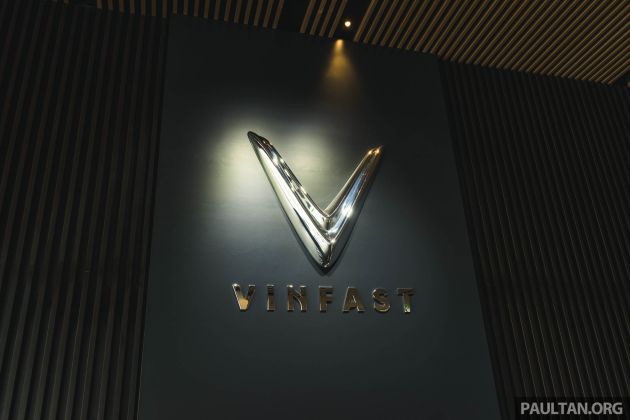
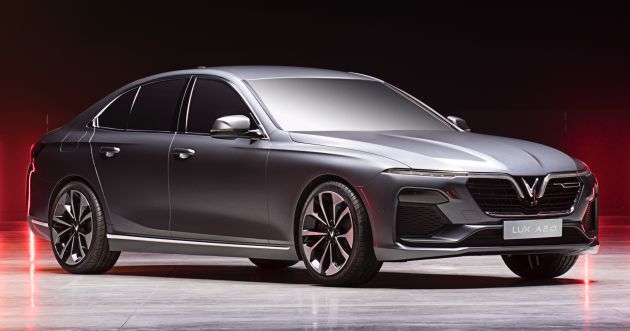



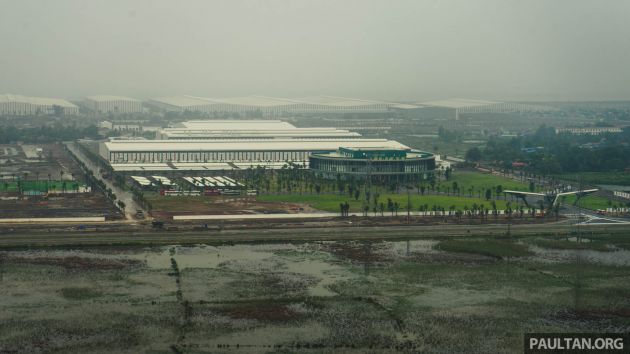
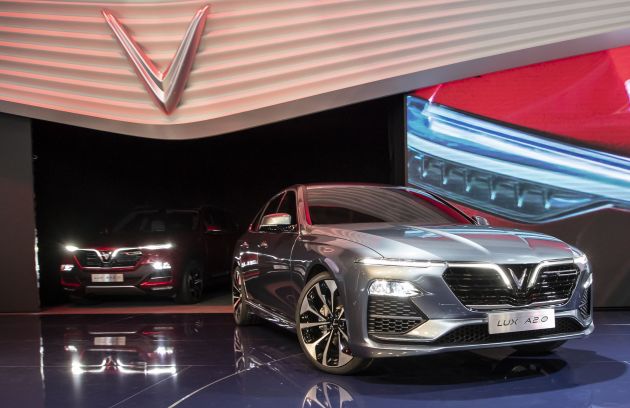






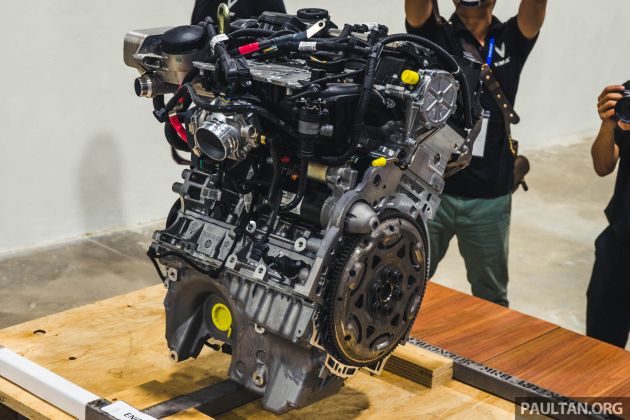
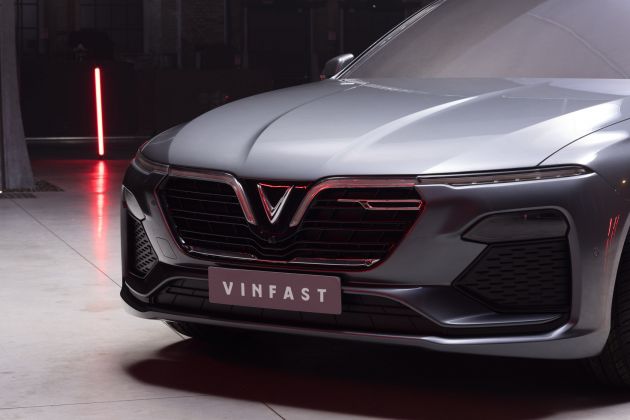
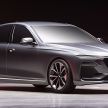
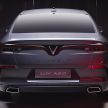
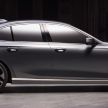
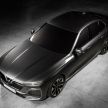
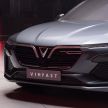
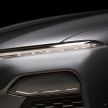
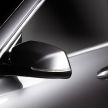
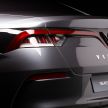
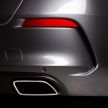
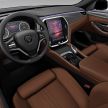
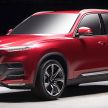
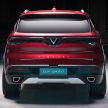
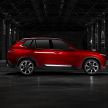
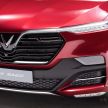
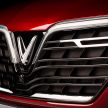
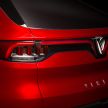
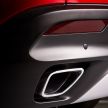

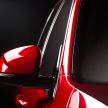
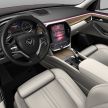
























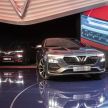
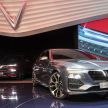
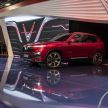
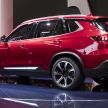



Vinfast only got BMW. our Proton got more supporter in honda, suzuki, mitsubishi, renault citroen
Pity vinfast got old engine that noone wants it anymore, it is just plonked out from museum
If they focus on Vietnam alone it will be difficult since cars are too expensive, maybe not in the future when the country has completed the road infrastructures. If they have a plan on selling the 250k cars a year without depending on its local market, this is something proton should study.
If the car is really good, expect Vin diesel to buy one.
Dunno who wants to buy, riches? Better buy BMW or Merc or Audi. Normal pipu? Nah, engine is not reliable. Vinfast? What is that?
Reminds me of lotus under dany bahar. Lots of hype but execution is totally another story. Vin Group will probably realize later that these mercenary expats while certainly impressive on the outside, are totally out off touch with the local consumer.
They seemed to be doing everything right so far. Outside of the usual China or India, Vietnam’s economy’s is also rising at a very brisk pace. Given that this was undertaken by a private venture who (should) prioritised financial stability instead of national pride , hopefully it won’t be making the same nationalistic-focussed decisions and incompetence that Proton’s previous management was making.
The cars also looks amazing, probably a given since its roots from Italy.
Wow so looks so amazing but to buy, no thank you.
Better buy more powerful vios
This what bolehland private company lack… Everything govt must feed. Not many local company dare to invest in R&D. Let alone setup a car company.
Like the “caretaker”DRB Hicom kan, which is still “sitting pretty”with the Geely arrangement.
This is how money is used right. But the country is still plaggued with poverty and corruption. The reason there’s so many bikes is because the general population can’t afford even a small car. Import makes are also expensive to boot. If you have worked there before you would understand where I am coming from when I say their people is not up to global standards yet. I have people working with me which is supposed to assist me in my day to day work who can’t even speak a line of English. Dont get me wrong, the Vietnamese are a nice bunch to hang out with but they still have a lot to do before they can reach our level of expertise. Reason no. one why I was there to work for them is because they needed an engineer who can speak and write English for their reports to be submitted to their foreign clients.
If they make a diesel car it will be called……. Anyways, wishing them well. Maybe might get sold here. If price is right, and with proper after sales support, why not?
So much money put into hype. Seems to be on the same path as LeEco car.
I faith in this Vinfast than any just Proton has to offer.
U have faith on just a body shell? Do elaborate that faith, cuz it sounded like sesat kes.
The shell already beat Proton down flat. Proton can just ride on others success.
Maybe they are too ambitious. I don’t think collaborating with BMW is a good move for a car maker starter in south east Asia. It is simply because BMW is expensive. They should learn from Proton by working with Japanese and Chinese car maker, focusing on producing economical car for citizens.
Why collaborating with BMW when you can be BMW of Asia like Proton?
the company’s name itself failed, isn’t vin a brand of toilet washer? hehe
Meaning wash toilet faster? Washing money perhaps? Lolz!
what a hard sell marketing way to get David Beckham on stage. How much would he get paid for that ‘show’? will he drive these cars ?
how does it matter if they wanna pay for Beckham or Beyonce..its their money and their strategy to bring a bing bang to their brand and make.
Alot of folks never research before throwing tantrum , put proton with vinfast is a shame , this company actually has long term goals than just introduce these 2 models . They dont focus on profit at the first 5 years plan to sell 2 cars , there are 4 fully electric cars will be on market early 2020 with price range from 20-28k usd , i work in lithium battery business, and had a chance to visit vinfast factory . None of any southeast asia countries can build the factory like they do , there are more than 120 foreigners from usa, canada, japan, Australia, china, korea, Germany, Austria, france, thailand, and even malaysia are currently working for vinfast , Borsch, Magna steyr, siemens , LG chem, AVL , and many more signed the deal with Vinfast , that’s how they built commercial cars in just under 365 days . The N20 bmw engine will be rework by AVL austria to reduce noise, VANOS system , and timing belt system to work with high output with low RPM . I think proton should take notes and think about relationship with chinese geely company, they do cheap cake with ugly copycat design that nobody wanna buy
Thanks for more information about Vinfast
Too expensive for ordinary people.
Vietnam under the communist is a poor and undeveloped.
Vietnam is communist… no fredom, no human rights.China used Vietnam to built its economy…vinfast buys the BASE of BMW and enginering of GM…en rebuilt the car with Italian archtec…Vietnam under the communist can fight and destroy lifes…the moste people are very poor. The regiem controls every things in Vietnam…..
CRESTOIL is coming to Vietnam its will be great that finally a brand will have a local distributor that can promote a world class brand. With the widest products line out there